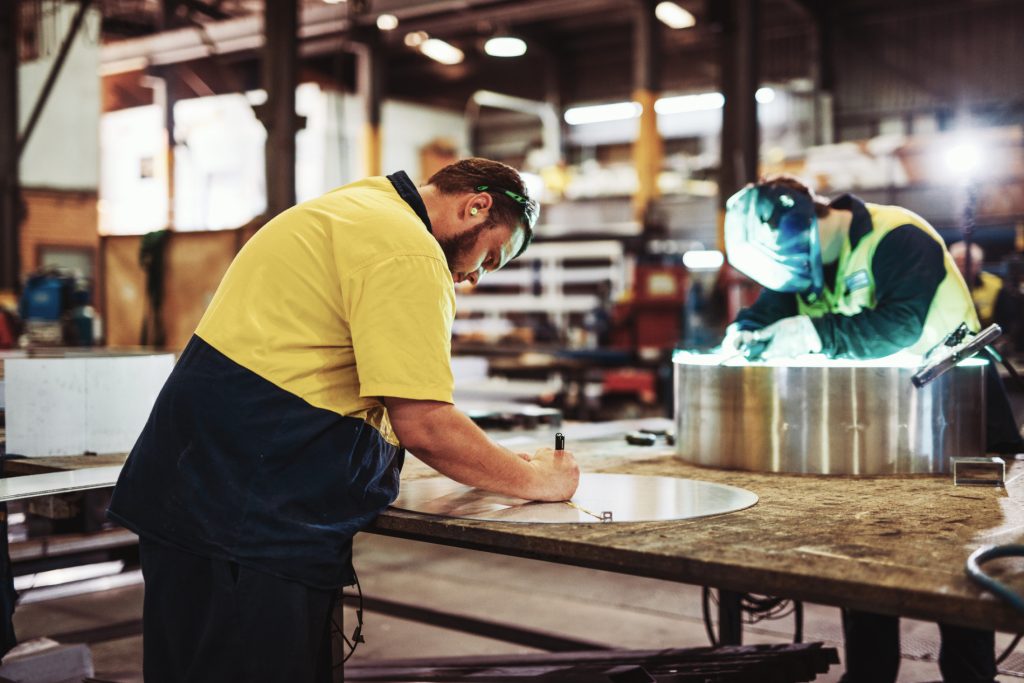Exploring Today’s Challenges and Future Prospects in Australia’s Infrastructure and Utilities Industries
Australia’s infrastructure and utilities industries play a vital role in supporting the country’s economy and quality of life. From transportation networks to energy and water supply systems, these industries form the backbone of modern society, enabling businesses to operate efficiently and people to live comfortably. However, with an increasing population and changing climate, these industries…
Australia’s infrastructure and utilities industries play a vital role in supporting the country’s economy and quality of life. From transportation networks to energy and water supply systems, these industries form the backbone of modern society, enabling businesses to operate efficiently and people to live comfortably.
However, with an increasing population and changing climate, these industries are facing new challenges that require innovative solutions.
To assist industry leaders in staying informed with the latest changes and developments in the industry, we’ve compiled stories exploring the current state of Australia’s infrastructure and utilities industries, the key issues they are facing, and the steps being taken to ensure their continued success.
$20M funding for bridge engineering assessments – Tayla Oates, Infrastructure Magazine
The National Heavy Vehicle Regulator (NHVR) in Australia, supported by the Federal Government, has allocated $12 million in funding to assess 125 bridges and culverts in 33 councils as part of the Strategic Local Government Asset Assessment Project (SLGAAP).
The locations were chosen based on priority freight routes and potential benefits for heavy vehicle operators. The assessments aim to help local councils better understand their assets’ capability and make informed decisions about heavy vehicle access.
The total investment from the Federal Government for the initiative is $20 million, with $4 million allocated for 2023. The SLGAAP has delivered 590 assessments across 88 local councils.
Read more here.
SRL early works to deliver over 800 jobs – Steph Barker, Infrastructure Magazine
Victoria’s Suburban Rail Loop (SRL) project, the state’s biggest infrastructure project, is expected to create more than 800 jobs in the initial early works phase for SRL East.
As Melbourne grows to a projected city of nine million by 2056, SRL will be crucial to ensuring its public transport network can manage an 80% increase in private vehicle trips.
The project will expand Victoria’s skilled workforce over the long term, with 14% of hours to be completed by apprentices, trainees, and cadets during the first phase of construction.
Girls studying STEM subjects will be able to strengthen their career prospects with an innovative school-based SRL East traineeship program, supporting more women to pursue careers in the construction industry.
Read more here.
New bill to boost funding to Northern Australia infrastructure – Tayla Oates, Infrastructure Magazine
The Australian Federal Government has introduced a bill to Parliament to allow the Northern Australia Infrastructure Facility (NAIF) to provide more financial assistance to eligible projects across Northern Australia. If passed, the bill will provide an additional $2 billion to NAIF, taking the total financing available to $7 billion, and expanding the definition of Northern Australia to include the Indian Ocean Territories.
The bill also clarifies the government’s expectation that NAIF is empowered to provide financial assistance to develop economic infrastructure for the benefit of First Nations Australians.
Read more here.
NSW Government lodges final water resource plans – Tayla Oates, Infrastructure Magazine
The New South Wales Government has completed its obligations under the Murray Darling Basin Plan by submitting a final water resource plan to the Murray Darling Basin Authority (MDBA).
The New South Wales Minister for Lands and Water, Kevin Anderson, said that this milestone highlights the government’s commitment to supporting Murray Darling Basin communities. The New South Wales Government is responsible for 20 out of the 33 water resource plans in the Basin.
Water resource plans are key to implementing the Basin Plan, ensuring that water is taken from the river system sustainably and according to legal limits.
Read more here.
Outdated and unreliable: Liddell Power Station closure speeds up renewables-powered plan for NSW – Jane Gardner, Climate Council
The closure of Liddell Power Station in New South Wales marks significant progress in the state’s move towards clean and affordable renewable energy, according to the Climate Council.
The station has consistently failed to produce its maximum amount of power and has been unreliable. Since the announcement of its closure in 2017, renewable energy generation in NSW has quadrupled and now generates twice as much power as Liddell.
Renewable projects in the pipeline include AGL’s big battery and the New England Solar Farm. After Liddell closes, there will be 18 coal-fired power stations remaining in operation in Australia.
Read more here.
Renewable energy growth must double to meet Australia’s emission goals, Clean Energy Council says – Peter Hannam, The Guardian
Despite record-breaking growth in Australia’s renewable energy sector, the industry is not growing fast enough to meet the Albanese government’s emissions reduction goals, according to the Clean Energy Council’s annual report.
While households added 310,000 new solar systems to rooftops and renewables supplied 35.9% of Australia’s total electricity generation in 2022, the speed of renewable energy growth needs to double to meet the government’s 2030 target, which implies an 82% reduction in pollution compared to 2005 levels.
Large-scale renewable investment reached $6.2bn last year, but more needs to be done to meet the emissions target.
Read more here.
If you want to find out more about what’s going on in the industry, you can reach out to our infrastructure and utilities experts through the form on this page.







